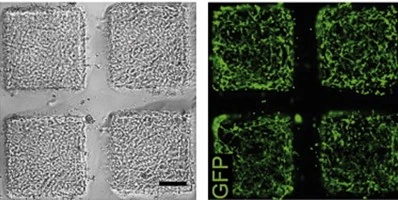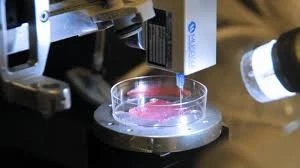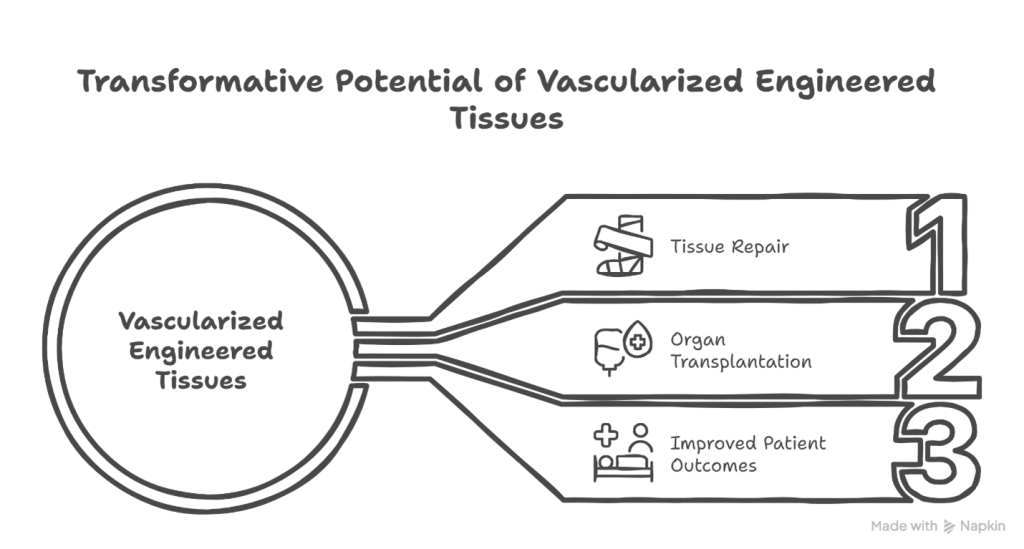Introduction
Vascular networks play a critical role in tissue survival by delivering oxygen and nutrients while removing waste products. Recent advancements in tissue engineering have focused on developing these networks within engineered tissues. This review explores the cutting-edge techniques and innovations that are enabling the creation of functional vascular networks to support tissue survival and integration.
Microfabrication Techniques for Vascular Network Development:

Microfabrication techniques such as lithography and micro-molding are used to create precise vascular structures. These methods allow for the creation of microchannels that mimic the architecture of blood vessels. While these approaches offer high precision, challenges remain, including the complexity of scaling up and achieving the necessary biological function of the networks.
3D Printing Approaches for Vascularization:

3D printing technologies, including extrusion-based and stereolithography methods, have revolutionized vascular network fabrication. These technologies enable the creation of complex, three-dimensional vascular structures by precisely placing cells and biomaterials. Recent innovations, such as bioink development and multi-material printing, have further enhanced the capability of 3D printing to create functional vascular networks suitable for tissue engineering.
Integration of Vascular Networks into Engineered Tissues:
Integrating vascular networks into engineered tissues, such as skin, muscle, and organs, is a key challenge in tissue engineering. Biomaterials and cell sources, including endothelial cells and mesenchymal stem cells, are used in combination with vascularization techniques to enhance tissue integration and functionality. This integration is essential for the survival and long-term viability of engineered tissues.
Applications in Regenerative Medicine and Clinical Practice:

Challenges and Future Directions:
Despite significant progress, challenges remain in scaling up vascular network development, ensuring the maturation of vascular structures, and implementing these techniques clinically. Future research will focus on overcoming these challenges by improving biomaterials, refining fabrication techniques, and developing methods for vascular network maturation to support long-term tissue survival.

